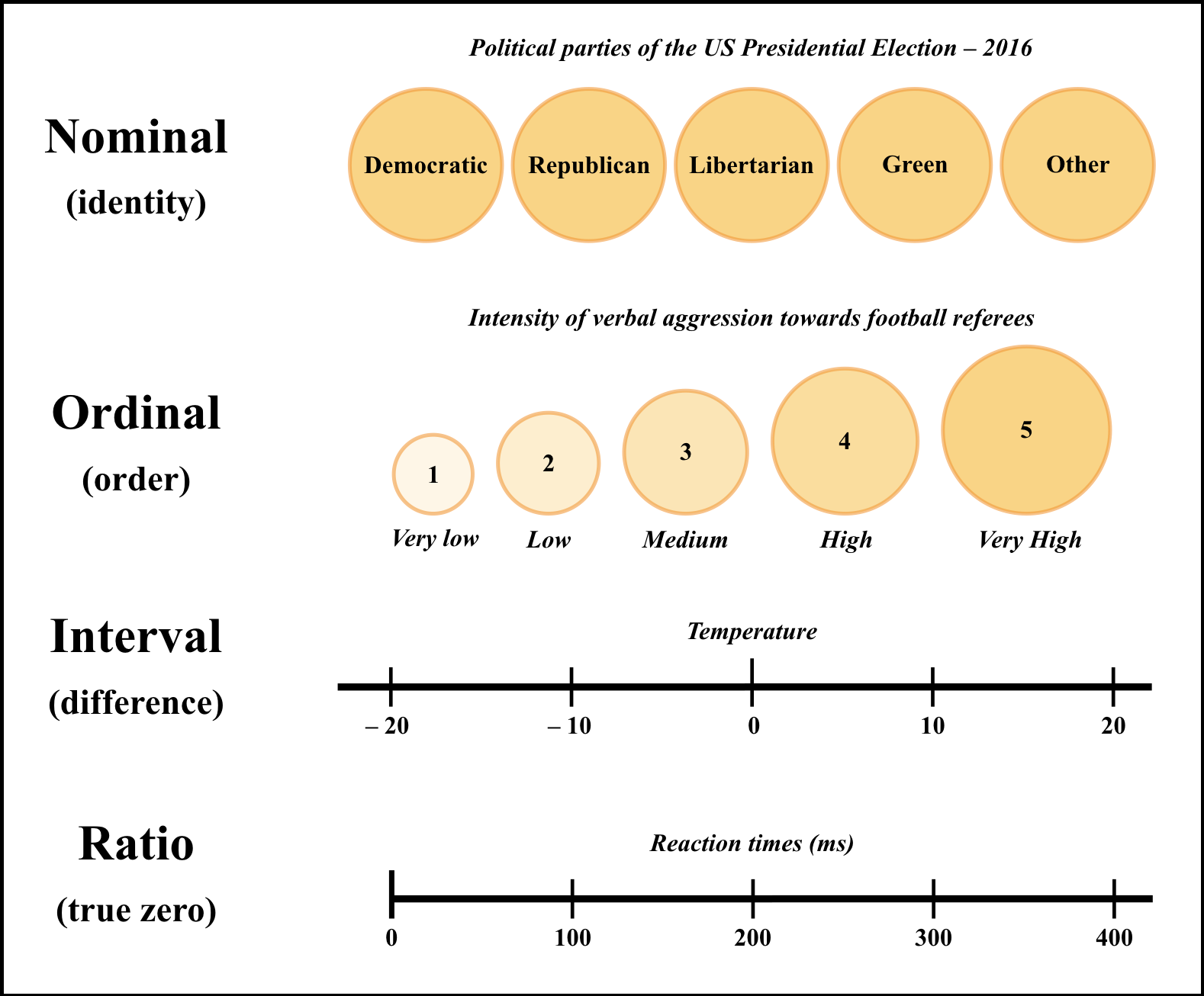12.2 Classification of scales of measurement
Psychologists have taken an a priori approach to scaling, avoiding the problems related to representation, uniqueness, invariance, and meaningfulness (Krantz et al., 1970). Although the properties of interval scales are often violated, we tend to assume that the values assigned to the responses given to psychological tests, questionnaires, or inventories form an interval scale. Let's review the popular classification of scales of measurement defined by Stevens (1946) (Figure 12.2).

Figure 12.2: Classification of scales.
12.2.1 Nominal scale
It consists of qualitative and unordered categories (e.g., political parties of the US Presidential Election-2016). The property of this type of scale is identity (i.e., X does/doesn't belong to the category Y). Nominal scales have two distinctive features:
- Categories should be mutually exclusive.
- Categories should be exhaustive.
12.2.2 Ordinal scale
It orders people, subjects, events, or characteristics along some continuum (e.g., intensity of verbal aggression towards football referees). The property of this type of scale is order (i.e., X is more/less than Y). Ordinal scales have two distinctive features:
- Numbers place objects in order.
- No information is given about the differences between points of the scale.
12.2.3 Interval scale
It is a scale on which equal intervals between objects represent equal differences (e.g., temperature). The property of this type of scale is difference (i.e., the difference between X and Y is the same as the difference between A and B). Interval scales have three distinctive features:
- Differences are meaningful.
- No information is given about ratios.
- The value zero is arbitrary.